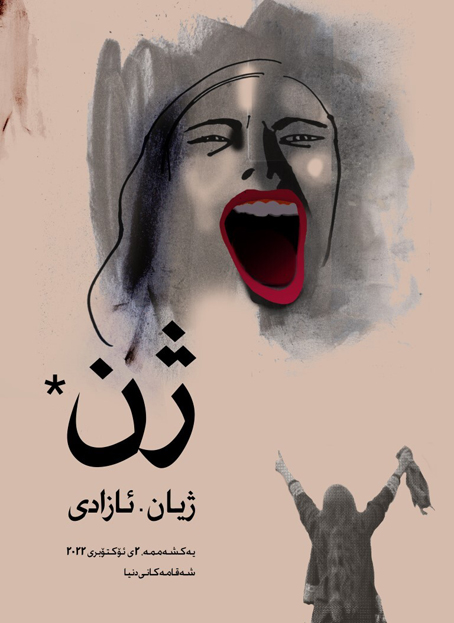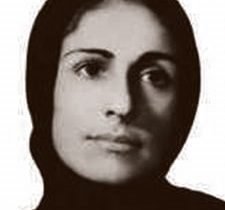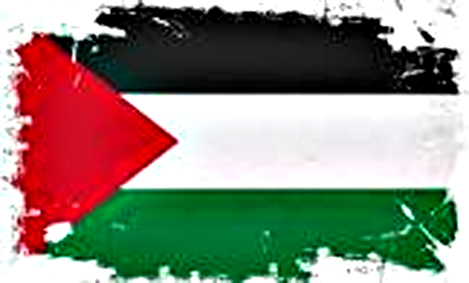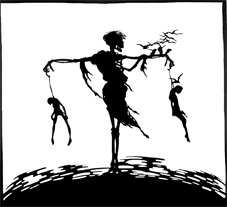|
Here we are to enter THE IRANIAN
WOMEN'S REVOLUTIONISTS against
the supreme leader, the arch-reactionary Ayatollah Ali Khamenei,
and his placeman president, Ebrahim Raisi. The message of
the women when he visited a university is plain: <give way or
get lost> in 2023.
IN MEMORY OF ASRA PANAHI (16)- JINA MAMINI (22) - NIKA SHAKARAMI (16), SARINA ESMAILZADEH (16) HADIS NAJAFI (20), AND MORE WOMEN WHO WERE ASSASINATED SO
FAR BY THE IRANIAN AXIS OF EVIL.
Click here for a total list so far
Dear reader, from here on the 'Woman,
Life, Freedom' pages menu will look a bit different and this
to avoid too many pop-ups ,meaning the underlined period
in yellow tells you in what period you are and click on another
underlinded period to go there. However, when needed a certain
topic will be in yellow meaning it's a link to go that topic and
will open in a new window. If you dissagree about any change feel more than free to let me know what you
think at
info@cryfreedom.net
(Updates
September 5, 2024)
|
December 31,
2023 - Preface about the below 3 heroines of Iran by
Gino d'Artali : Beacons of hope and inspiration on the
road towards a long and free Iran . * Jina Amini,
our sister/daughter who martyred herself for freedom;
*Narges Mohammadi, our sister and as I call her 'mother
of a free Iran' and winner of the Nobel Prize of Freedom
2023 and sentenced five times to a total of 31 years in
prison and 154 lashes but who refuses to give in to the
mullahs' regime to wear a hijab or bow to their demands
and therefore is refused medical care although needing
it badly and bringing her live in danger but says "Victory
is not easy, but it is certain" * and Maryam
Akbari Monfared, our sister who's encarcerated since
15 years and refuses to bow down to the mullahs saying "Finally,
one day, I will sing the song of victory from the summit
of the mountain, like the sun. Tomorrow belongs to us"
Read all about them here and let them inspire you on
your road towards a long and free Iran or as we say in
the West: 'Three strikes and the mullahs' regime is out'
Be the finalizing strike dear and brave dissent
|
|
A to VICTORY tribute to
NARGES MOHAMMADI
Sept. 2, 2024:
"Shameless": Imprisoned Nobel Laureate in Iran Slams
Custodial Death..."
August 9, 2024
"My heart cries...
(For Narges Mohammadi and all suffering but fighting
back mothers/women)
and earlier heroic stories
May 6, 2024
"Tyranny will fall"

"Victory is not easy, but it is certain"
watch it here :
https://www.youtube.com/watch?v=8LAMPz57Aqw
Click here for a news-overview
from January 15, 2024 'till October 31, 2023 |
JINA AMINI'S VOICE IS ALSO HEARD
And do read also the above linked incredible
December 2023 update!
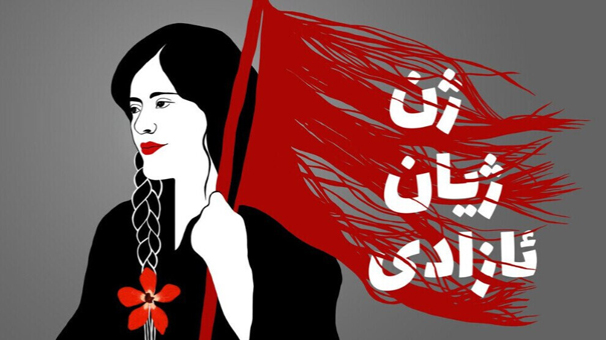
despite the mullahs'
regime to force it down!
Her mother speaks
out loud and clear
Click here for the latest news of the
'Woman, Life, Freedom'
revolution
|
PAKSHAN AZIZI
Actual News:
August 19, 2024
Sentenced to Death for Assisting
Women Targeted by ISIS
And read here her full story:
July 23 - 22, 2024
"Denying the Truth,
and Its Alternative"
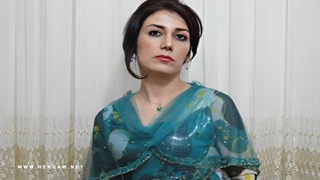
and more in actual news below
MARJAM AKBARI
MONFARED

June 24, 2024:
The Iranian Regime
Judiciary Launches a New Case to Seize the Assets of
Maryam Akbari Monfared and Her Family, in Revenge for
Seeking Justice for Her Siblings Executed in the 1980s
Dec 30, 2023: Not bowing for the mullahs' regime
she says:
"Finally, one
day, I will sing the song of victory from the summit of
the mountain, like the sun. Tomorrow belongs to us"
|
|
September 4 - 2,
2024
<<Number of Arrested
Individuals by Iranian Security Forces Rises to 4...
and <<Flu-Like Illness
Spreads Among Female Prisoners in Evin Prison Amid Lack
of Medical Care...
and <<164,000 Children Out
of School in Iran, Official Reports...
and <<Iranian Prisoners'
Anti-Execution Campaign Reaches 32nd Week...
and <<Omid Ahmadnejad, a
Kurdish Singer, Arrested by Iranian Security Forces...
and <<Iranian Security
Forces Violently Arrest Ramyar Abubakri and Siavash
Soltani, Members of Justice-Seeking Families in Mahabad...
and <<Maryam Mehrabi in
Dire Health after 28 Days of Hunger Strike...
and more actual news |
May 10 - 3, 2024
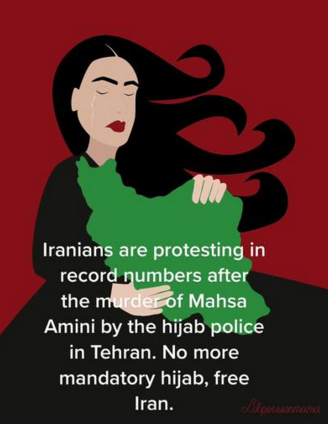
'War against the No-hijabi
women'
|
September 2 - August 26, 2024
<<Shima
Rameshk: Tragic Case of 14-Year-Old Child Bride' Suicide
in Iran...
and
<<'Shameless': Imprisoned Nobel Laureate in Iran Slams
Custodial Death...
and
<<Iranian Political Prisoner Faces Fresh 7 Years Prison
Sentence...
and
<<'Women prisoners in Iran keep resisting despite
everything'...
and
<<Ghezel Hesar Prison: Three Political Prisoners Protest
Against the "Systematic Murder" and "White Massacre" of
Political Prisoners...
and <<University Crackdowns: Expulsion of Sahra Rezaei
and Suspension of Shaida Aghahamidi...
and
'Lost Control': Iranian Police Admit Killing Man in
Custody...
and
<<Iran Arrests Faramarz Brahui, 15-Year-Old Brother of
Slain Baloch Protester...
and more actual news
and to earlier actual news |
When one hurts or kills a women
one hurts or kills hummanity and is an antrocitie.
Gino d'Artali
and: My mother (1931-1997) always said to me <Mi
figlio, non esistono notizie <vecchie> perche puoi imparare qualcosa da
qualsiasi notizia.> Translated: <My son, there is no such thing as so
called 'old' news because you can learn something from any news.>
Gianna d'Artali.
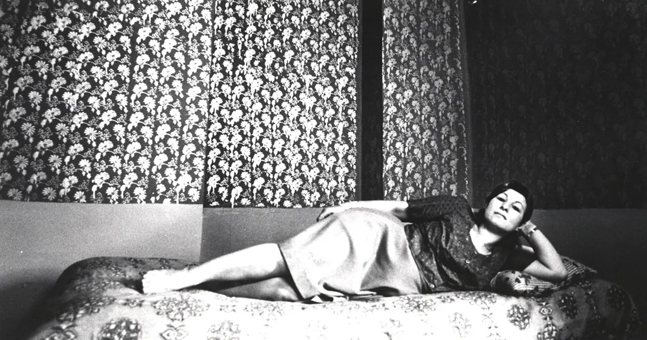
red light district
Iranwire - September 2, 2024
<<Recreating the Citadel: Preserving the memory of Tehran's red light
district
Robert Weinberg is a writer on art and a radio and podcast producer,
whose features and exhibition reviews have appeared in numerous
publications, including The Telegraph, Apollo, The British Art Journal,
and IranWire. In this interview, he speaks with curator Dr. Vali
Mahlouji about his groundbreaking project to preserve and exhibit Kaveh
In early 1979, two days before the return of Ayatollah Khomeini to Iran,
a devastating fire consumed the walled-off neighborhood of Tehran known
as the Citadel of Shahr-e No. This area was the city's red-light
district, accessible only through a single gate. Many of the women
within perished in the blaze. Those who managed to escape were arrested,
and several were executed by firing squad that same year, becoming the
first women sentenced by the new Islamic courts. The remnants of the
Citadel were erased in an act of cultural cleansing. For decades, the
Citadel had existed on the margins of a rapidly transforming society.
Its eradication served as a harbinger of the oppressive years to come,
according to visionary London-based curator Vali Mahlouji, who has been
researching its history. Since 2014, Mahlouji has been displaying the
Citadel's story in museums around Europe and Asia, reconstructing its
history around Kaveh Golestan's photographs of its inhabitants made in
the mid-1970s. A few years before the Citadel's destruction, Golestan, a
documentary photographer, was granted unique access to photograph the
women of Shahr-e No. Born in 1950, Golestan came from an intellectual
family and was partly educated in England. He was working as a
correspondent for the BBC when he was killed by a landmine in Iraq in
2003. However, with the 200 photographic negatives he made of the
Citadel's inhabitants, Golestan ensured that this vanished world would
not be forgotten. Taking these pictures took Golestan several years,
requiring long visits to the Citadel to gain the trust of its residents.
The images were made between 1975 and 1977, and Golestan himself
hand-printed 61 of the negatives. The photographs remained unseen until
Mahlouji recirculated them in 2014. "Golestan showed his photographs in
1978 at the University of Tehran, but the exhibition was shut down very
shortly after it opened because it was seen as provocative," Mahlouji
explains. "The area had become a walled inner-city ghetto since the coup
in 1953. Its residents and activities were hidden from sight, and
Golestan wanted to break that invisibility." But, in Mahlouji’s view,
Golestan's striking images go beyond merely depicting their subjects. "I
think this group of photographs constitutes the strongest study of the
female figure in late 20th-century Iranian photography," Mahlouji says.
"Golestan was deeply socially engaged and politically driven, with a
distinctive eye. He was opinionated about issues and claimed he was
documenting, as he said, the truth. Of course, the truth is a difficult
concept, especially in photography. But Golestan was very much of the
post- Vietnam school, where photography gave agency to the
dispossessed." Golestan was part of an active intellectual milieu in
1960s and 1970s Iran, driven by social conscience and striving to expose
and incorporate the marginalized into the mainstream. "There was a
prevalent Iranian intellectual trajectory at the time, focusing on the
natural rights of citizens who were not part of the metropolitan
dynamics," says Mahlouji. "At its core, it was a push to expand the
moral circle and altruism to include all those who were otherwise
treated as lesser citizens. For me, it coincides with the expansion of
law, legal rights, citizenship rights, and natural rights." Documenting
the Citadel was an act of social conscience for Golestan, a way to
resist the forces that sought to erase the margins of society. "That's
exactly why people like him pursued these projects. They went against
prejudices and ambivalences from both below and above," says Mahlouji.
Golestan originally conceived the women’s images as one third of a
triptych, depicting a tragic cycle of urban migration, poverty, and
dispossession: the laborer arrives in Tehran, meets the sex worker, and
together they bring into the world a child destined to be forgotten by
society. "He kept notes about his imagined triptych," says Mahlouji.
"They are somewhat romanticized in an artistic sense. A large group of
the images are premeditated, composed, and choreographed. In some ways,
they’re highly aestheticized. You may read them as objectifying the
women, or you may see them as giving them agency and space to express
themselves - to exist rather than be pitied. Artistically, the series
stands as a superb set of portraits of people. There isn't a sense of
‘us and them.' I believe Golestan successfully sublimates the layers of
unequal power dynamics." For the past decade, Mahlouji's touring
exhibition, titled Recreating the Citadel, has embedded Golestan's
photographs within their broader social context, as the photographer
would have wanted. "I go back to the 1920s and excavate the history of
the creation of the red-light district," says Mahlouji. "I then push the
history through Golestan's portraits to the district’s destruction.
Today the area is submerged under a park, artificial lake, and theater
for various recreational pursuits. These are significant to my study as
they represent a form of re-territorializing an urban space and erasing
a contentious history, ensuring that no traces remain. There are also no
traces of the scars inflicted on the people who lived there, for which
nobody was ever held to account. No justice was ever administered. There
was no investigation into how the fire started, who initiated it, or who
carried it out. It was seen as a natural wrath of society,
instrumentalized as people’s anger toward the decadence of the monarchy
in Iran." Mahlouji has observed that viewers are profoundly affected by
the photographs. "The audience inevitably experiences some kind of
shared horror," he says. "Overcoming grief has a social dimension. It
does not happen individually, especially when it is of a social nature.
So when people pass through the exhibition, they witness people already
in a compromised situation. The first time we showed the exhibition in
Amsterdam, people literally came out pale-faced." Since 2010, Mahlouji -
through his Archaeology of the Final Decade (AOTFD) project - has been
devoted to excavating and recirculating artists, artworks, and cultural
accounts that have been obscured, censored, or destroyed. He sees it as
a kind of socio-political archaeology, aiming to restore these
narratives to social memory. Resurrecting Golestan's archive -
comprising some 250,000 mostly unseen negatives-is a major endeavor,
offering a new generation the opportunity to engage with a past that is
still relevant today.
"There's everything from visual documentation of early rural schools to
meetings of the Writers Association to political rallies to workers at
various factories," Mahlouji says. "It's a very broad visual archive of
the social and political history of Iran. As a whole, I believe it
comprises the most important visual document of late 20th-century Iran."
Mahlouji is now trying to raise funds to digitize, index, and archive
all of Golestan's materials to make them accessible to historians,
researchers, and anyone interested in Iran's social and political
history. The forthcoming publication of Golestan's photographs of the
Citadel of Shahr-e No will be a critical step in this journey. It will
be the first time that the 61 portraits will be published. With the
book's content complete and production underway, Mahlouji is now seeking
to raise £18,000 to cover the costs of material, graphic design,
editing, and distribution through Hatje Cantz Verlag in Berlin. In
addition to the photographs, the book will include pioneering research
into themes of gender apartheid, state violence, and civic resistance,
making it an essential contribution to a broader discourse on gender,
sexuality, and state-imposed violence under the Islamic regime. "They
are very provocative," says Mahlouji, "and I am being subversive, and of
course, it is a very sore point with the Islamic Republic, especially
the way I contextualize it."
In a world where cultural erasure is all too common, AOTFD is using the
power of art to transcend boundaries, revive forgotten histories, and
offer hope. Among the diverse cultural legacies they are reclaiming,
Mahlouji - who also trained as a psychoanalyst - sees Golestan's
photographs as a starting point to recreate the history of the Citadel.
"These kinds of scars live within our bodies, our social psyche, and our
historical imagination without us being aware of them. I use this
Freudian analogy of repressed historical memories. The whole project is
about allowing repressed memories to resurface, to explode them into the
present. When you're looking at the pictures now in a book, they're a
document of a time gone by and a vanished aspect of the city and
culture."
Once a site of secrecy and shame, the Citadel of Shahr-e No and its lost
inhabitants can now - thanks to the efforts of Vali Mahlouji - be
reclaimed as symbols of resistance and resilience.
To contribute to the publication that will bring together Kaveh
Golestan's Prostitute Series for the first time, visit: https://www.indiegogo.com/projects/citadel-and-the-photography-of-kaveh-golestan#/
Source:
https://iranwire.com/en/features/133488-recreating-the-citadel-preserving-the-memory-of-tehrans-red-light-district/
Women's Liberation Front 2019/cryfreedom.net 2024
|



